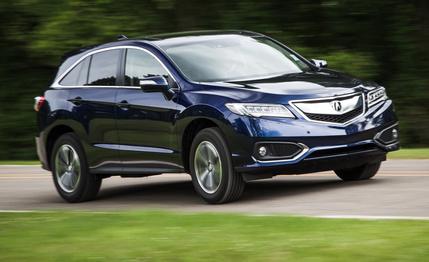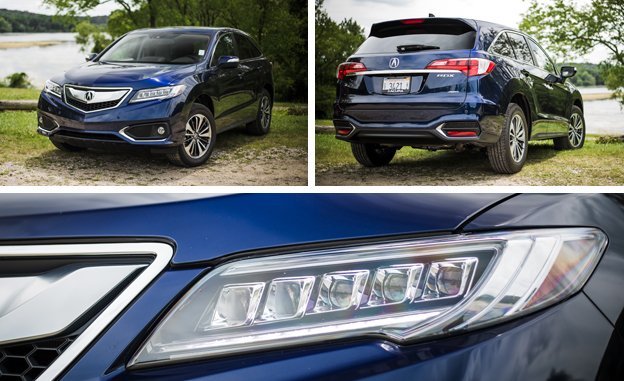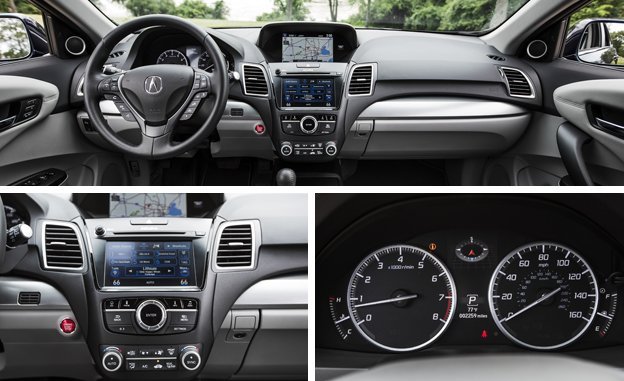
 Instrumented Test
Instrumented Test
Acura was the first Japanese carmaker to challenge the luxury establishment, rolling into the big-bucks banquet in 1986 with a bold corporate mantra: “Precision Crafted Performance.” Yet it didn’t take long for Honda’s luxury division to stray from that lofty credo and embark on a meandering identity quest that’s only now beginning to show tiny glimpses of returning to its roots—on the passenger-car side of the house, at least.
But it’s another story in Acura’s SUV department. After kicking up some dust with its first offering in the compact-crossover segment, the slightly unruly but stimulating original RDX, Acura has retreated to the safety of posh interiors, creamy ride quality, quiet operation, lots of tech features, and not too many demands on the driver.


That evolution occurred when the RDX went from generation one to generation two for 2012, and it’s amplified by this update for model-year 2016. It brings sexier styling (if any of these two-box haulers can be classified as sexy), more content, more safety features, a modest power increase, and a 1-mpg uptick in EPA highway fuel economy to 28 mpg with all-wheel drive. We recorded 23 mpg during our travels with this AWD model.
Raising the output of the 3.5-liter V-6 by six horsepower and a single pound-foot of torque, predictably, makes no difference at the test track. Acceleration results are identical with those posted by the 2014 AWD RDX we tested: zero to 60 in 6.2 seconds and through the quarter-mile in 14.8 at 96 mph.
These are certainly respectable numbers by the standards of this class and quicker than many, and the six-speed automatic is nicely attuned to the engine’s powerband, going about its business unobtrusively in full auto mode. Its languid responses to the paddle shifters add nothing to the driving experience, however. Beyond that, the RDX is a smooth operator on just about any surface, isolating occupants from the harsh realities of nasty pavement, and doing so quietly. What’s not to like?
The answer to that question depends on what you expect from your vehicle. If it’s merely luxuriously furnished comfort and insulation from the vicissitudes of daily traffic, fortified by vigorous throttle response (compared with much of the competition), the RDX is hard to fault. But if you demand a little more—eager responses, minimal body motions, tactile steering, confidence-inspiring grip, decisive braking—the RDX begins to feel a little ho-hum.
The electric power steering, for example, varies effort with speed but doesn’t feel particularly precise; the driver finds himself making little midcorner corrections. Body roll is just this side of abundant; grip, delivered by a set of Michelin Primacy MXM4 all-season tires (235/60-18), is modest at 0.77 g; transient responses are relaxed; and braking performance is so-so by class standards. Our test crew noted the complete absence of fade and consistent distances, but 184 feet from 70 mph is not a bragging point. Understeer is plentiful, of course, but that’s pretty much universal in this segment.


Leaving dynamics to one side for the moment, the RDX stacks up as a tempting package in terms of eye appeal, features, roominess, and value. The new fascia, with Acura’s now-familiar LED headlight array, adds a little drama to a package that was already about as shapely as it gets in this class. The list of features packed into this full-boat test vehicle—all-wheel drive, navigation, a power sunroof, leather, ELS premium audio, Pandora, Bluetooth connectivity, a power tailgate, power everything else—make the $44,340 all-in price look pretty appealing in the growing luxury-compact-crossover tournament.
And that price also includes Acura’s new batch of AcuraWatch safety features: forward collision warning, collision mitigation braking, adaptive cruise control, lane-departure warning, lane-keeping assist, and a color display screen. As for the car’s other tech, we find it difficult to appreciate the Honda/Acura preoccupation with touch-screen controls and phobic rejection of traditional knobs and buttons. And this particular screen can be a bit of a stretch to reach from the driver’s seat.
Nevertheless, for the owner who prioritizes quiet comfort and luxurious appointments over driving enjoyment, the RDX makes a pretty compelling case. Maybe Acura could retrieve its original slogan and revise it for its SUV offerings: Precision Crafted Comfort.